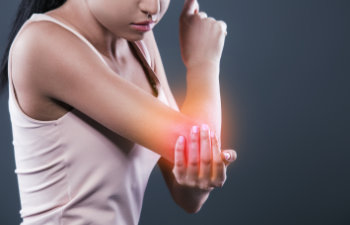Common Areas Affected by Bursitis

Bursitis is a painful condition that occurs when the bursae, small fluid-filled sacs that cushion the bones, tendons, and muscles near your joints, become inflamed. This inflammation can cause significant discomfort and restrict your movement, impacting your quality of life. At Allied Pain & Spine Institute, we specialize in diagnosing and treating bursitis to help you regain comfort and mobility. Understanding the common areas affected by bursitis can help you recognize the symptoms early and seek appropriate treatment.
What is Bursitis?
Bursitis is the inflammation of the bursae, which act as cushions between bones and surrounding soft tissues. When these sacs become irritated, they swell and cause pain. Bursitis can result from repetitive motion, prolonged pressure, traumatic injury, or underlying conditions like arthritis. While bursitis can occur anywhere where there are bursae, there are common areas that are affected by inflamed bursae.
Shoulder (Subacromial Bursitis)
The shoulder is one of the most common sites for bursitis, often affecting the subacromial bursa. This type of bursitis typically results from repetitive overhead activities or prolonged pressure on the shoulder. Athletes, manual laborers, and individuals who frequently lift objects above their heads are particularly susceptible. Symptoms:
- Pain on the outside or top of the shoulder
- Pain that worsens with overhead activities or at night
- Limited range of motion
Elbow (Olecranon Bursitis)
Olecranon bursitis, also known as student’s elbow or miner’s elbow, affects the bursa located at the tip of the elbow. It often results from prolonged leaning on the elbows or direct trauma. This condition is common among students, athletes, and individuals who work in occupations requiring frequent elbow support on hard surfaces. Symptoms:
- Swelling at the back of the elbow
- Pain and tenderness
- Redness and warmth in the affected area
Hip (Trochanteric Bursitis)
Trochanteric bursitis affects the bursa located on the outer part of the hip. This type of bursitis is common in runners, bikers, and individuals who engage in repetitive hip movements. It can also result from hip injuries, uneven leg length, or underlying conditions like arthritis. Symptoms:
- Pain on the outside of the hip
- Pain that worsens with prolonged standing, walking, or climbing stairs
- Tenderness to touch
Knee (Prepatellar Bursitis)
Prepatellar bursitis, also known as housemaid’s knee, affects the bursa in front of the kneecap. It often results from frequent kneeling, direct trauma, or repetitive movements. Individuals in occupations that require prolonged kneeling, such as carpenters, gardeners, and cleaners, are at higher risk. Symptoms:
- Swelling at the front of the knee
- Pain when bending or kneeling
- Redness and warmth over the knee
Ankle (Retrocalcaneal Bursitis)
Retrocalcaneal bursitis affects the bursa located between the Achilles tendon and the heel bone. This type of bursitis is common in runners, dancers, and individuals who wear tight or poorly fitting shoes. It can also result from overuse, direct trauma, or underlying conditions like gout. Symptoms:
- Pain and swelling at the back of the heel
- Pain that worsens with activity
- Tenderness when pressing on the back of the heel
Bursitis can affect various areas of the body, causing pain and limiting mobility. Recognizing bursitis’s symptoms and common sites is crucial for early diagnosis and effective treatment. At Allied Pain & Spine Institute, we are committed to providing comprehensive care for bursitis to help you regain comfort and function. If you are experiencing symptoms of bursitis, schedule a consultation with us today to receive an expert diagnosis and personalized treatment. Our goal is to help you achieve a pain-free and active lifestyle. We have locations in Mountain View, Los Gatos, and San Jose, CA.
Posted on behalf of Allied Pain & Spine Institute

